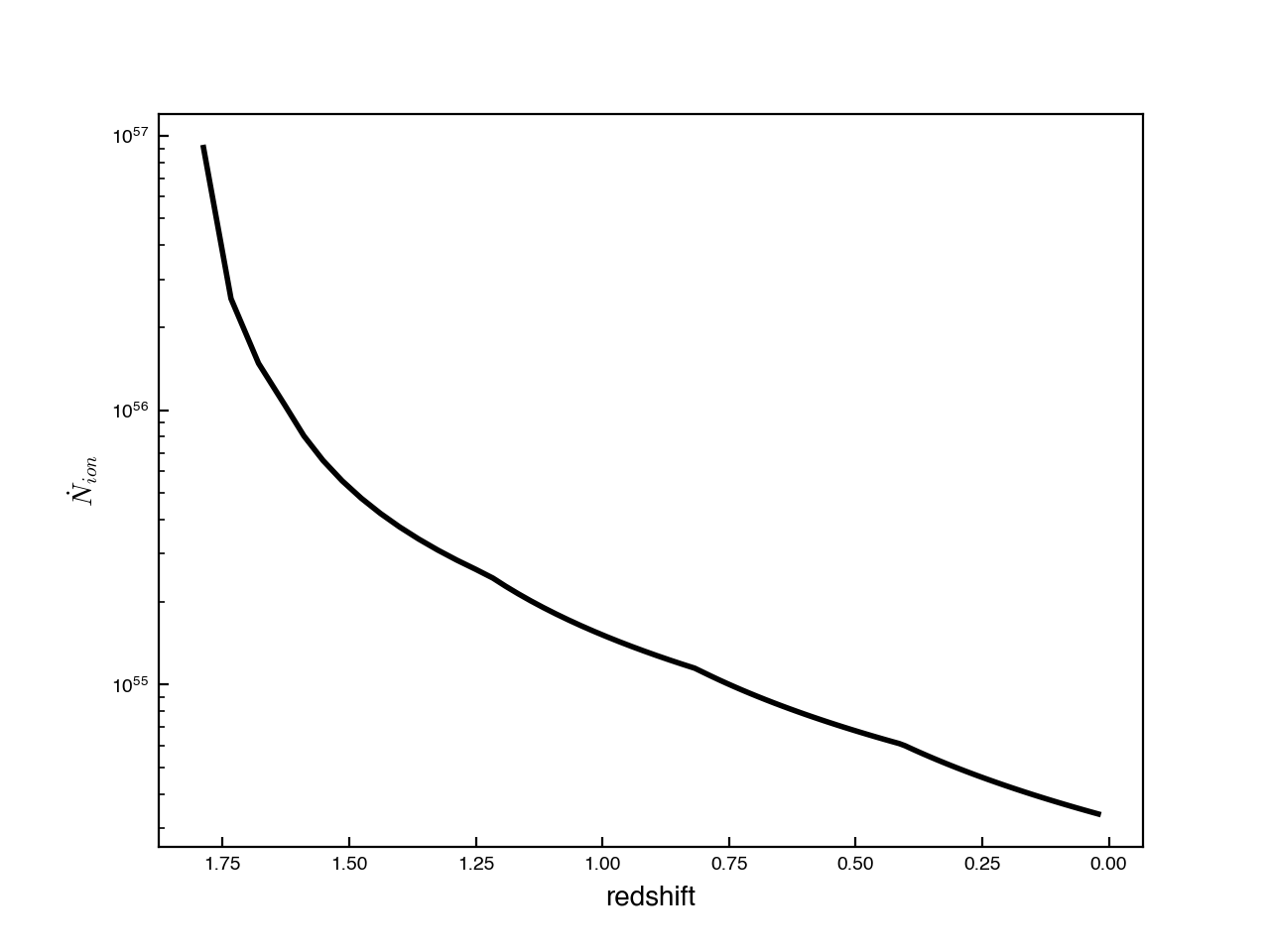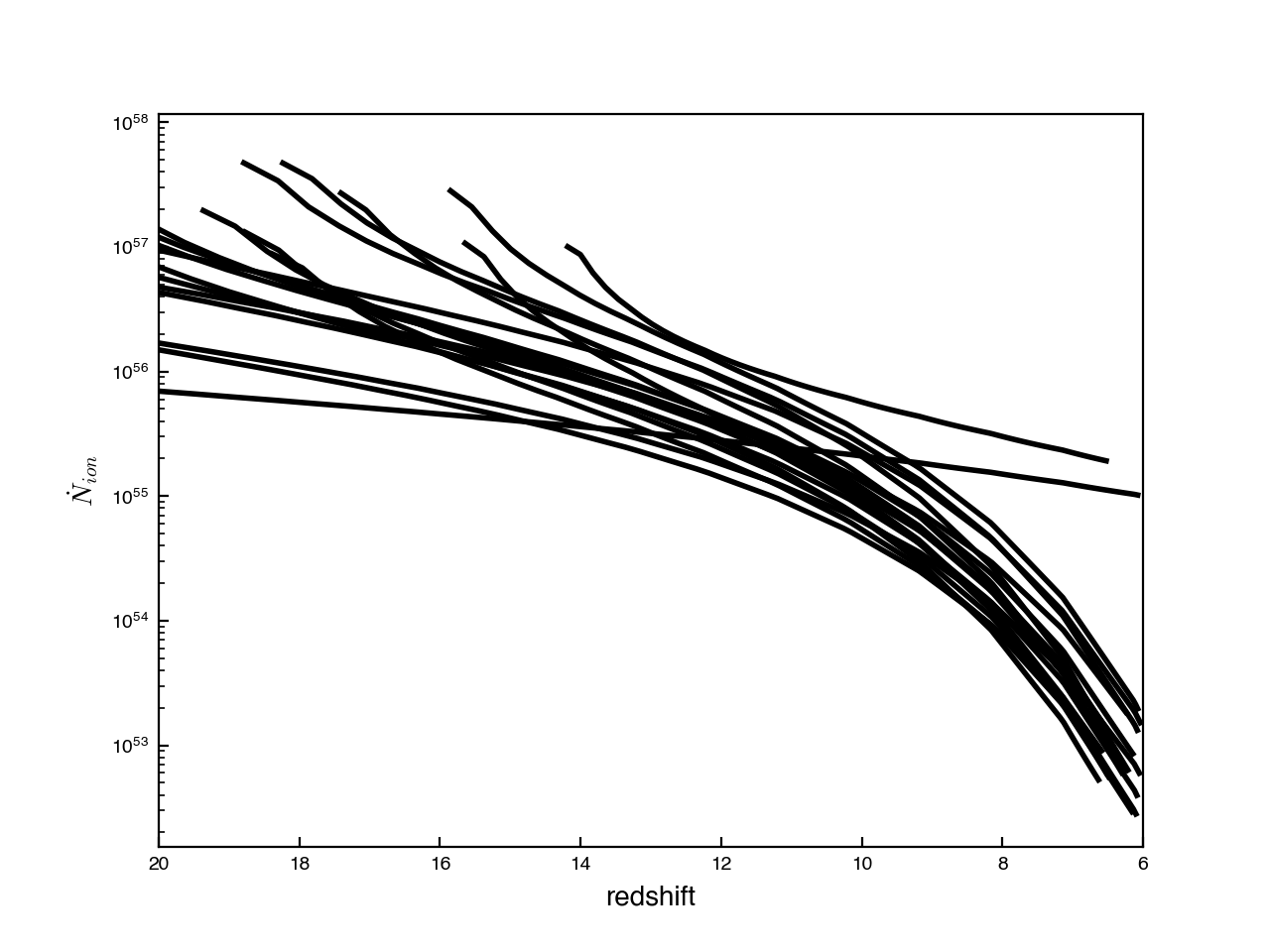Nicole Drakos
Research Blog
Welcome to my Research Blog.
This is mostly meant to document what I am working on for myself, and to communicate with my colleagues. It is likely filled with errors!
This project is maintained by ndrakos
Reionization Shell Model
I am planning to calculate the reionized region around each galaxy in the DREaM catalog using a simple shell model, following Magg et al. 2018..
In the post, I will outline the method for this.
Overview of Calculation (from Magg et al. 2018)
\[\dot{N}_{\rm ion} = V n^2 C \alpha + \dot{V} n\]Here are the values they used:
- \(V\) is the volume of the ionized region; this is the unknown. Since ionized regions are small compared to cosmological scales, we can neglect cosmological expansion and redshifting of ionizing photons
- \(\dot{N}_{\rm ion}\) is the rate of ionizing photons; I have already calculate the instantaneous value for each galaxy
- \(n=0.75 \rho_b/m_p\) is the current average hydrogen number density; I think this is the same as the comoving \(\langle n_H \rangle\) value I used in other calculations
- \(C=3\) is the clumping value. They note that the solution is not sensitive to this choice. I used \(C=3\) for the \(n_{\rm ion}\) calculations as well, but noted I might update it to be time-dependent later.
- \(\alpha = 2.6e^{-13} {\rm cm}^3 {\rm s}^{−1}\); This is the value I used for calculating the IGM neutral fraction
For calculating the ionizing fraction, I just took the instantaneous ionizing photon rates for galaxies, and solved the ODE as a function of redshift. It is more complicated here, because I want to solve the ODE for each galaxy.
Note that we can rewrite the ODE above as:
\[\dot{V} + [ n C \alpha] V = \dfrac{\dot{N}_{\rm ion}}{n}\] \[d/dt ({e^{n C \alpha t}} V) = e^{n C \alpha t} \dfrac{\dot{N}_{\rm ion}}{n}\] \[V(t) = \dfrac{e^{- n C \alpha t}}{n} \int e^{ n C \alpha t} \dot{N}_{\rm ion} dt\]Therefore, we need to know \(\dot{N}_{\rm ion}\) as a function of time for each galaxy.
How does Ndot evolve in time?
HereI consider one example galaxy in the catalog. Note that FSPS will return the spectrum as a function of galaxy age age.
Here is the intrinsic spectrum as a function of age, expressed in age of the Universe [Gyr]. This galaxy started forming at ~3.7 Gyr (z~1.8), and is currently at a redshift of ~0.01

Here is \(\dot{N}_{\rm ion}\) as a function of time for this galaxy

We are more interested in the high-z galaxies, so here are 20 galaxies that are located at redshift ~6

How to proceed?
It seems like it would be feasible to calculate this for every galaxy. I will need to parallelize as before, but I don’t see it taking much longer than calculating \(\dot{N}_{\rm ion}\) as I had before. The slow part is running FSPS, but I won’t need to make any extra calls to this.
Next steps:
- Double check that these numbers make sense.
- Calculate the volume, using the integral above for 1 galaxy, check it looks reasonable
- Write code to do this for all galaxies
- Plot the reionized regions, see if they agree with radiative transfer simulation findings. (i.e., is the percentage of ionized regions reasonable?)